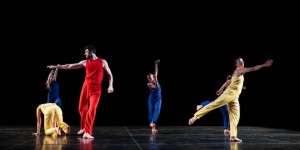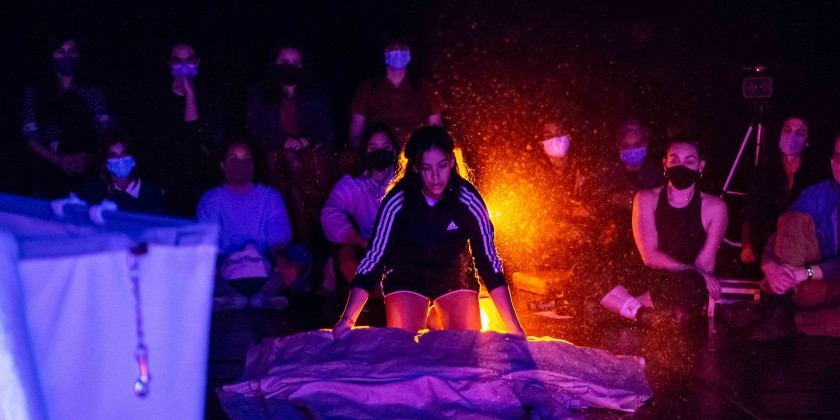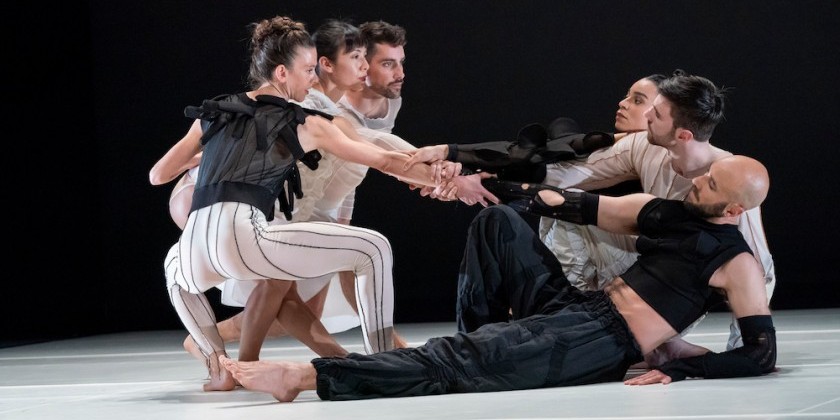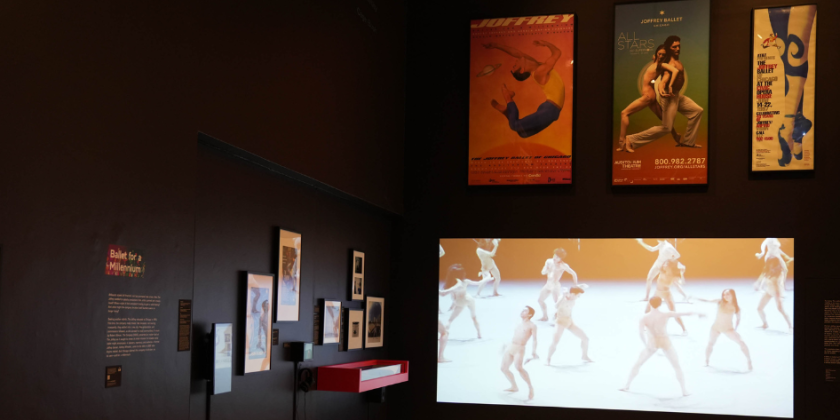IMPRESSIONS: Trisha Brown Dance Company at Wave Hill

In Plain Sight
June 10, 2021
Founding Artistic Director and Choreographer: Trisha Brown
Associate Artistic Director: Carolyn Lucas
Executive Director: Barbara Dufty
Dancers: Cecily Campbell, Marc Crousillat, Kimberly Fulmer, Leah Ives, Amanda Kmett’Pendry, Kyle Marshall, Patrick McGrath, Jamie Scott
After two days of inclement weather, the sun re-emerged and so did the Trisha Brown Dance Company, in an outdoor performance, on Thursday, at Wave Hill, in The Bronx. Even before the dancing began, spectators could feel a vital current flowing through this magnificent garden: an invisible life-force seemed to curl through the ancient trees and the flowers, buzzing in the clover-speckled grass. The afternoon was glorious; and a re-awakening—so long in coming—seemed at hand.

For our consideration, the troupe offered a selection of dances by its late founder, Trisha Brown (1936-2017), mostly some of the brainy pieces that helped define “downtown” dancing in 1970s. By the final offering, however, an excerpt from Another Story as in falling, of 1993, Brown had become theatrical and was moving toward the interest in human emotion that would define her last period. What marvels! All these dances are brilliant and essential to the canon of American art; and it felt absolutely terrific to see them brought to life.
For the opening piece, Locus, three square platforms have been placed on the lawn. An overgrown pergola stands behind them, and beyond that we can see the sparkling waters of the Hudson River. A single dancer occupies each platform, with the space conceived as a cube and the movements organized around 27 points within the cube. In these early pieces, virtuosity is a function of the choreographer’s intellect rather than of the dancers’ brawn.

Brown’s style is typically gentle. Locus begins with low-impact swings, twists and little hops that appear casual, but the phrases grow and as the dancers explore their little worlds they fill them with original ideas. A kneeling dancer suddenly falls sideways onto one hip. Another dancer lies flat, tracing part of a circle like a compass by scrabbling sideways on her hands while her feet remain pinned to one spot. Evidently in 1975 Brown couldn’t have imagined the Anti-social distancing imposed on us last year; yet in 2021 Locus resonates powerfully. We can admire the way the dancers remain connected despite their isolation, their phrases overlapping and pulling apart.
A short lecture-demonstration precedes the performance of Solo Olos before a nearby tree. Here a group of dancers prove their skill by executing phrases forward and backward; with pairs and individuals breaking out to perform a second phrase, and then a third phrase which share the space with the first phrase as it advances stubbornly toward its end. Seated among the spectators, Kyle Marshall calls instructions to his colleagues: (“Leah, reverse!”) The dancers saunter and scamper and draw squiggles in the air. Lying in the grass, they seem about to fall asleep, but abruptly roll over and continue.

Now we traipse after them to another beautiful spot in the garden, soaking up the sun’s healthful rays as we go. Brown’s 1971 solo Accumulation has been turned into a duet with the dancers facing each other on opposite sides of a reflecting pool. They’re reflecting—get it? This clever ploy allows the spectators, who are also seated on both sides, to watch the dance from the front and from behind. Accumulation might be sub-titled “A hitchhiker’s guide to post-modern dance,” since it famously begins with a dance for twisting thumbs. As The Grateful Dead sing Uncle John’s Band (“Will you come with me?”), the movement phrase lengthens and lengthens, adding head-turns, toe-rises, shoulders that pull back sharply, and a swatting gesture as the dancer turns to one side. The piece feels alternately teasing and heroic.
Off we trudge to another spacious, emerald lawn. In Leaning Duet I, couples hold hands and the dancers tilt away from each other as they traverse the space. When two couples meet face to face, they are not allowed to avoid the obstacle in their path by stepping to one side or walking around it. Instead, one couple must pass laboriously through the other, switching hands as one dancer ducks under the arm barrier. It seems like a goof, until you start to think about how we relate to one another in the real world. Then the dance reveals images of dependency, yearning for freedom, intransigence, and blind obedience to the rules.

Another Story as in falling resonates more darkly. Brown had in mind a character she called “Little Man,” a steady and unflappable worker accompanied by “little people” of like type. In this excerpt, minus the scenery and costumes by Roland Aeschlimann, the movement feels grave. The dancers appear half-frozen; yet their hands have much to do. The dancers begin by pointing at us with hands flattened. Later their hands become wedges; they clap and pull apart sharply. Fingers mesh and joined hands flutter downward like autumn leaves. Here, too, we see Brown’s interest in proximity and its risks. Since the movement is slow, the danger of a crash seems minimal (this isn’t Opal Loop); yet there’s something unsettling about the sudden stops and near misses in Another Story as in falling. Maybe it’s because these characters don’t seem conscious of one another’s presence. As in certain paintings by the Le Nain brothers, the figures appear together but alone. For all Brown’s concern with process, her dances possess a rare humanity.













